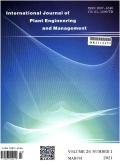NPP I&C Safety Assessment by Aggregation of Formal Techniques
International Journal of Plant Engineering and Management
Pub Date : 2018-07-22
DOI:10.1115/ICONE26-82270
引用次数: 0
Abstract
Safety assessment of nuclear power plant instrumentation and control systems (NPP I&Cs) is a complicated and resource consuming process that is required be done so as to ensure the required safety level and comply to normative regulations. A lot of work have been performed in the field of application of different assessment methods and techniques, modifying them and using their combinations so as to provide unified approach in comprehensive safety assessment. Anyway, performed research have shown there are still challenges to overcome, including rationale and choice of the safety assessment method, verification of assessment results, choosing and applying techniques that support safety assessment process, especially in the nuclear field. In our work we present developed framework that aggregates the most appropriate safety assessment methods typically used for NPP I&Cs. Key features that this framework provides are the formal descriptions of all required input information for every safety assessment method, possible data flows between methods, possible output information for every method. Such representation allows to obtain possible paths required to get necessary indicators, analyze the possibility to verify them by application of different methods that provide same indicators etc. During safety assessment of NPP I&Cs it is very important to address software due to its crucial role in I&C safety assurance. Relevant standards like IEC 60880 [1] and IEC 62138 [2] provide requirements for software related activities and supporting processes in the software safety lifecycle of computer-based I&C systems of nuclear power plants performing functions of safety category A, B and C, as defined by IEC 61226 [3]. Requirements and frameworks provided by IEC 60880 and IEC 62138 for the nuclear application sector correspond to IEC 61508, part 3 [4]. These standards define several types of safety related software and specify particular requirements for each software type. So as to verify software and confirm correspondence to required safety level, different techniques are suggested in normative documents. We share our experience obtained during software failure modes and effect analysis (software FMEA) and software fault insertion (software FIT) processes into FPGA-based platform, NPP I&C systems based on that platform, and RPCT, integrated development environment used by RPC Radiy and end users to design user application logic, specify hardware configuration etc. We apply software FIT to outputs of RPCT, considering source code, configuration files and firmware files. Finally, we provide a case study of application the developed safety assessment framework and software FMEA/FIT practices during practical assessment of FPGA-based NPP I&C system.基于形式化技术聚合的核电厂I&C安全评价
核电厂仪表与控制系统的安全评估是一个复杂的、耗费资源的过程,需要进行安全评估,以确保所要求的安全水平并符合规范规定。在不同评价方法和技术的应用、修改和组合使用方面已经做了大量的工作,以便为综合安全性评价提供统一的方法。无论如何,已进行的研究表明,仍有挑战需要克服,包括安全评估方法的基本原理和选择,评估结果的验证,选择和应用支持安全评估过程的技术,特别是在核领域。在我们的工作中,我们提出了一个开发框架,该框架汇集了通常用于核电站i&c的最合适的安全评估方法。该框架提供的主要功能是对每种安全评估方法所需的所有输入信息、方法之间可能的数据流、每种方法可能的输出信息的形式化描述。这种表示可以获得获得必要指标所需的可能路径,分析通过应用提供相同指标的不同方法来验证它们的可能性等。在核电厂控制系统的安全评估中,软件在控制系统安全保障中起着至关重要的作用,因此对其进行评估非常重要。IEC 60880[1]和IEC 62138[2]等相关标准对执行IEC 61226[3]定义的A、B和C类安全功能的核电站计算机I&C系统的软件安全生命周期中的软件相关活动和支持过程提供了要求。IEC 60880和IEC 62138为核应用领域提供的要求和框架对应于IEC 61508第3部分[4]。这些标准定义了几种类型的安全相关软件,并规定了每种软件类型的特定要求。为了验证软件是否符合要求的安全级别,规范性文件中提出了不同的技术建议。我们将在软件故障模式和影响分析(软件FMEA)和软件故障插入(软件FIT)过程中获得的经验分享到基于fpga的平台,基于该平台的NPP I&C系统,以及RPC Radiy和最终用户使用的集成开发环境RPCT来设计用户应用逻辑,指定硬件配置等。我们将软件FIT应用于RPCT的输出,考虑源代码、配置文件和固件文件。最后,我们提供了一个应用所开发的安全评估框架和软件FMEA/FIT实践的案例研究,用于基于fpga的核电厂I&C系统的实际评估。
本文章由计算机程序翻译,如有差异,请以英文原文为准。
求助全文
约1分钟内获得全文
求助全文

 求助内容:
求助内容: 应助结果提醒方式:
应助结果提醒方式:


